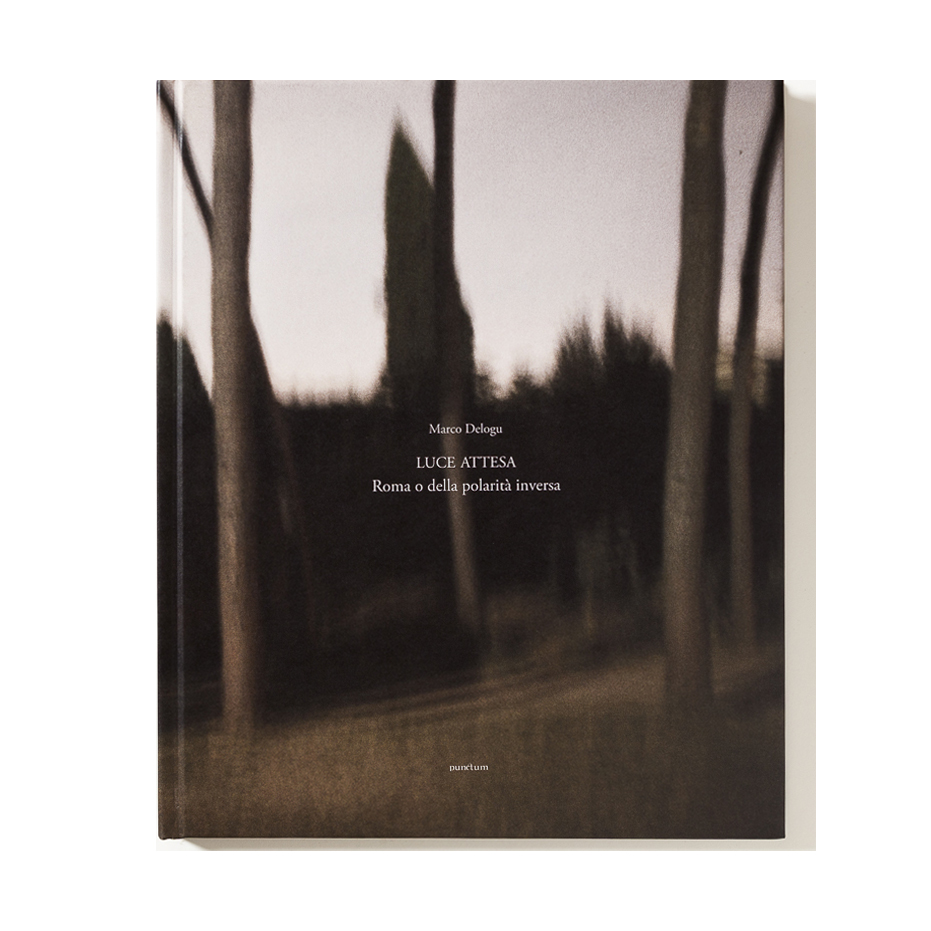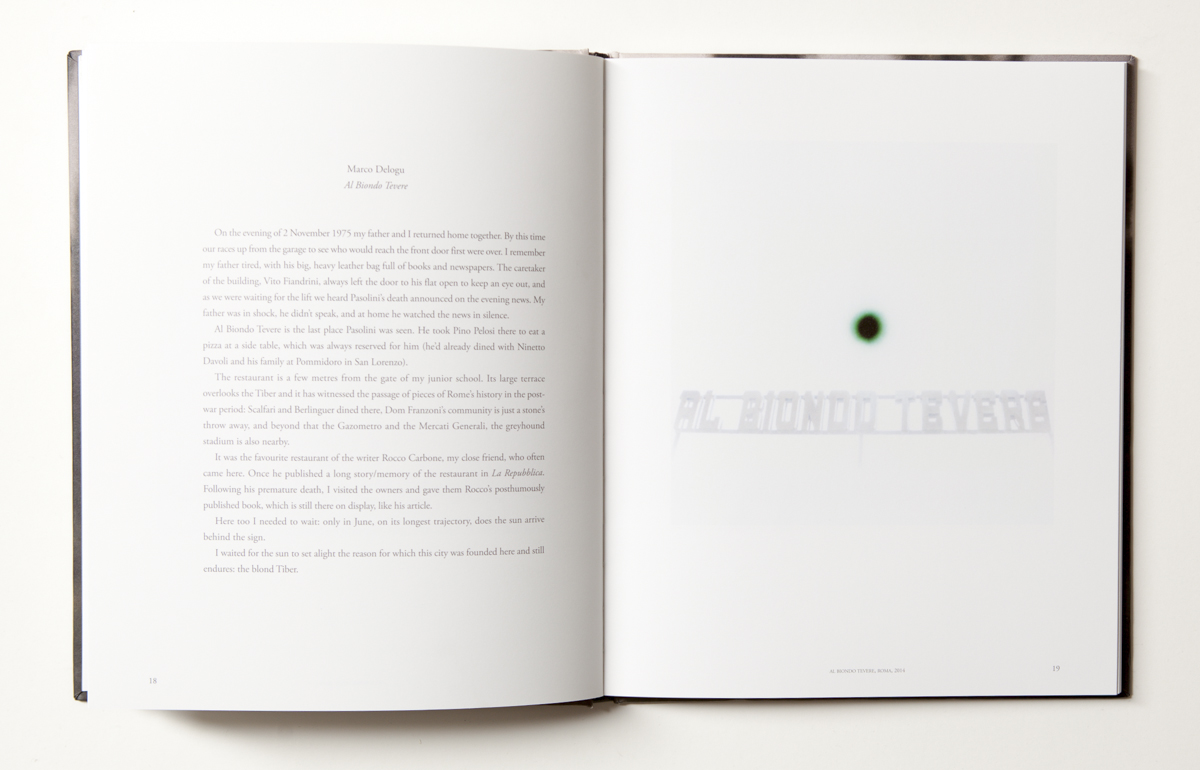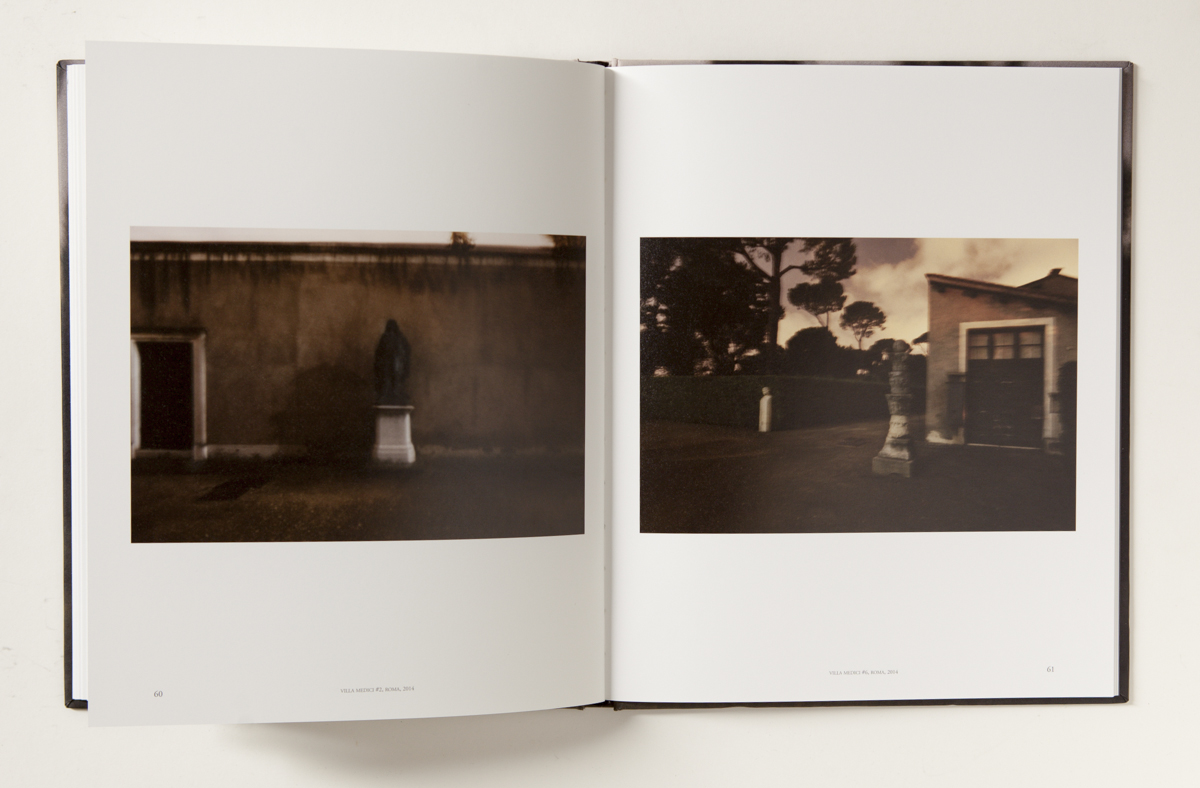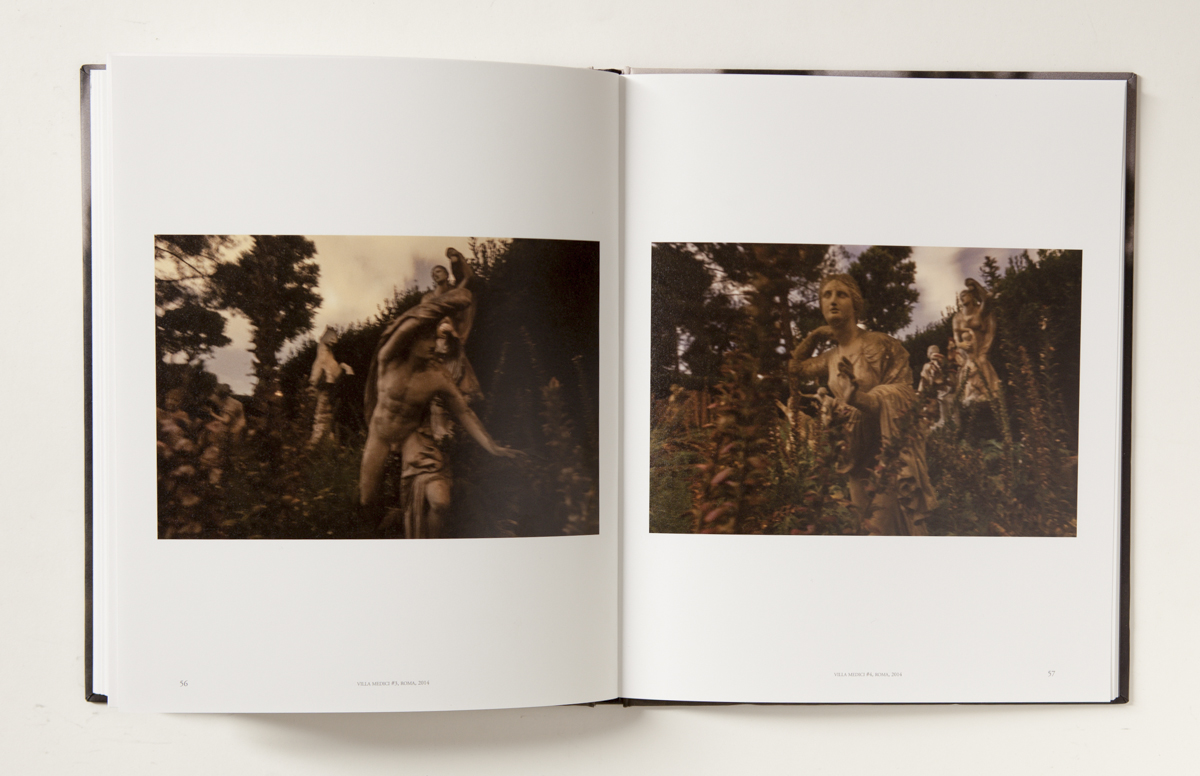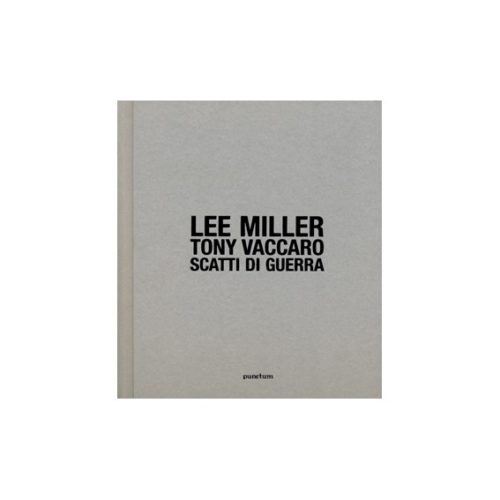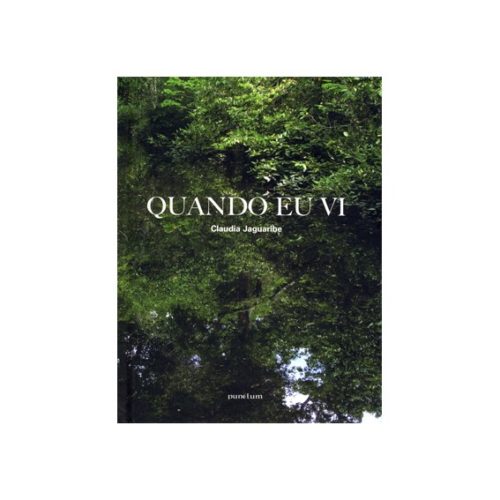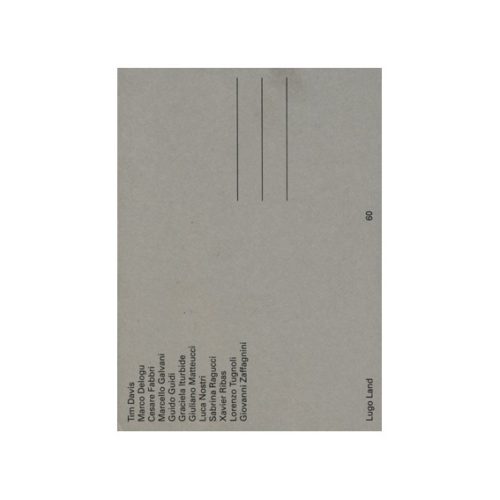Descrizione
[:it]
Roma o della polarità inversa
Al dodicesimo anno della Commissione Roma, Marco Delogu, che l’ha inventata, iniziata e curata per dodici edizioni come parte integrante del Festival della Fotografia di Roma, ha pensato che fosse giunto il momento di mettersi in gioco direttamente e di provare, questa volta, a raccontare Roma, la
sua città, con lo sguardo di una persona che l’ha vissuta e la vive, dopo averla fatta raccontare ai più grandi fotografi nazionali e internazionali, con uno sguardo “dal di fuori”, di chi questa città non l’aveva mai vissuta. È stato così interessante e stimolante scoprire come Josef Koudelka, Olivo Barbieri, Anders Petersen, Martin Parr, Graciela Iturbide, Guy Tillim, Alec Soth, Tim Davis e altri, vedessero questa città cogliendone ogni volta un aspetto diverso, dettagli sorprendenti e inaspettati, ribaltamenti di cliché, visioni dall’alto del cielo e dal basso di un marciapiede, ma sempre e comunque “sguardi estranei”.
Nella serie delle lune e dei soli neri che Delogu presenta come Commissione Roma di quest’anno, si percepisce al contrario uno sguardo di qualcuno che questa città la conosce “dal di dentro”, nella sua natura più intima, nella sua bellezza e nella sua inerzia. Una ricerca che parte dalle contraddizioni di una grande città e dalla sua “polarità inversa”. Attraverso la particolare luce di Roma e l’inversione dei suoi valori, Delogu ne racconta la sua dimensione fuori dal tempo e al di là dello spazio. Un’inversione che mostra l’eccesso di luce che ha reso queste fotografie diurne “cieche”, dove ogni cosa è stata inghiottita dal bianco, come fosse il buio della notte, dove sono rimaste solo insegne appese nel vuoto che dicono più che far vedere. Nei paesaggi illuminati solo dalla luce flebile della luna, le fotografie notturne, le cose appaiono al limite della loro presenza fisica, sfiorate dalla luce tenue e incerta della luna, come sul punto di scomparire. In entrambi i casi siamo di fronte ad “apparizioni” più che a immagini.
Come nei contorni sfumati del sogno, tutto qui perde di fisicità, inondato di luce o appena percepibile nella penombra di un’immagine lievemente mossa. Una dimensione onirica che rende tutto irreale, sospeso nel tempo e nello spazio. Proprio attraverso queste apparizioni, Delogu racconta la città: le insegne e i frammenti urbani appaiono sospesi e improvvisi. Ogni elemento riaffiora da una memoria lontana fatta di cinodromi, cinema ormai in disuso, mitici luoghi ai bordi del fiume, tutti carichi di storie. Immagini sfumate, come qualcosa di cui si sta perdendo il ricordo. È così che appaiono queste ambientazioni notturne illuminate dalla luna.
Nel silenzio della notte di luna piena tutto appare irreale, diventa la scena di un teatro della notte in attesa dei suoi personaggi, in attesa che qualcosa accada. Nel silenzio degli acquedotti dell’Agro Romano così come nei parchi delle ville storiche o sul colle del Palatino, vagano i fantasmi di personaggi che non si sa più se sono reali o solo narrati, se sono storici o solo immaginati. Ecco la Roma di Marco Delogu dove “la notte s’è fatta giorno e il giorno è divenuto notte”. La polarità inversa di una luce e di un luogo che inverte tempo e spazio e dove la luce e il mito, la storia e la natura, inghiottono il reale e lo trasformano in una grande apparizione.
Bartolomeo Pietromarchi[:en]Rome or reverse polarity.
In the twelfth year of Rome Commission, Marco Delogu, who invented it, initiated and curated it
for twelve events as an integral part of the Rome Photography Festival, thought that the time had come to enter the arena directly and to try, this time, to narrate Rome, his city, with the vision of a person who has lived and still lives there, after having it narrated by the greatest national and international photographers with a vision “from the outside” of those who had never experienced this city. It was thus interesting and exciting to discover how Josef Koudelka, Olivo Barbieri, Anders Petersen, Martin Parr, Graciela Iturbide, Guy Tillim, Alec Soth, Tim Davis and others saw this city, capturing every time a different aspect, surprising and unexpected details, overturning of clichés, visions from high in the sky and from down below on the pavement, but always and in all cases “foreign visions”.
On the contrary, in the series of black suns and moons which Delogu presents as Rome Commission of this year, a vision is perceived of someone who knows this city “from the inside”, in its most
private aspects, in its beauty and in its inertia. An exploration which starts from the contradictions of a big city and from its “reverse polarity”. Through the special light of Rome and the reversal of its values, Delogu narrates its timeless dimension beyond space. A reversal which shows the excess of light which have made these daytime photos “blind”, where everything has been swallowed up by the white, as if it were the dark of night, where only signs hanging in the void have remained which tell more than they show. In the landscapes illuminated only by the faint light of the moon, the night-time photos, things appear at the limit of their physical presence, brushed by the subtle and unsure light
of the moon, as if about to disappear. In both cases we are faced with “apparitions” rather than images. As in the hazy contours of a dream, everything here loses physicality, filled with light or barely discernible in the half light of a slightly blurred image. A dream-like dimension which makes everything unreal, suspended in time and space. Through these apparitions, in fact, Delogu narrates the city and the signs and urban fragments appear suspended and sudden. Every element surfaces from a far-off memory made up of dog race tracks, cinemas now fallen into disuse, mythical places on the banks of a river, all full of stories. Hazy images, like something whose memory is being lost. This is how these night settings lit by the moon appear.
In the silence of the night with a full moon everything appears unreal and becomes the scene for a night theatre awaiting its characters, waiting for something to happen. In the silence of the aqueducts of the Agro Romano as in the parks of the historic villas or on the Palatine Hill, the ghosts of the characters wander, no longer knowing if they are real or only narrated, if they are historical or only imagined. This is the Rome of Marco Delogu where “the night has become day and the day has become night”. The reverse polarity of a light and of a place which reverses time and space and where the light and the legend, the history and the nature, swallow up reality and transform it into a great apparition.
Bartolomeo Pietromarchi[:]

